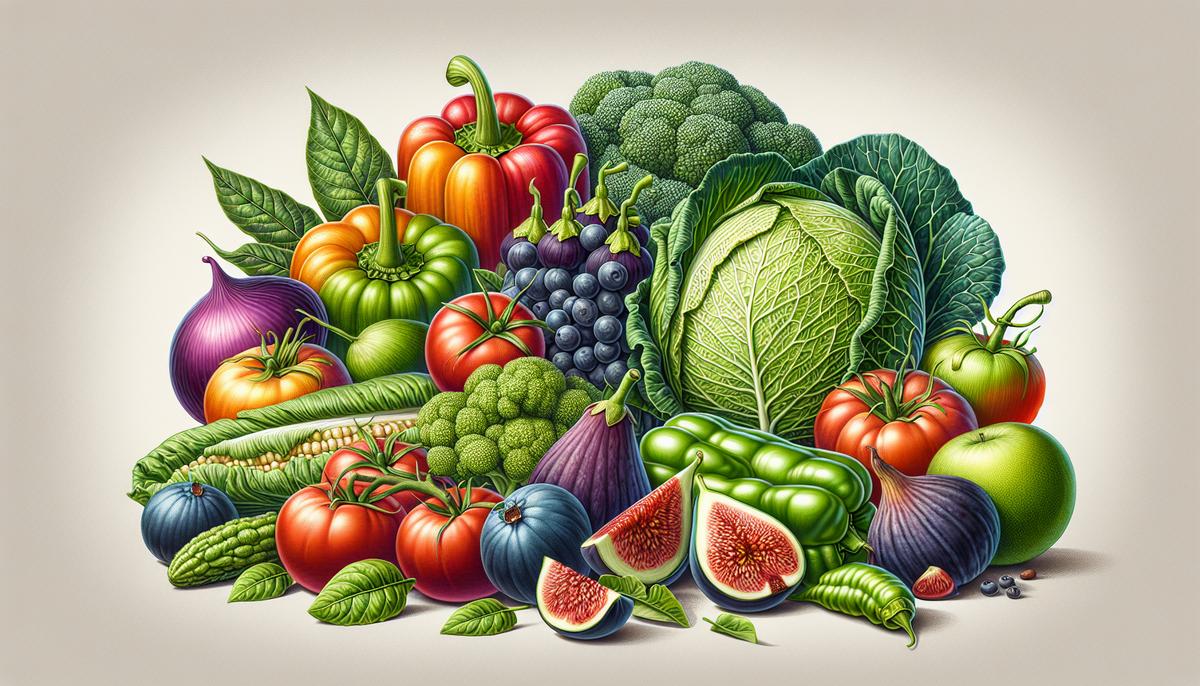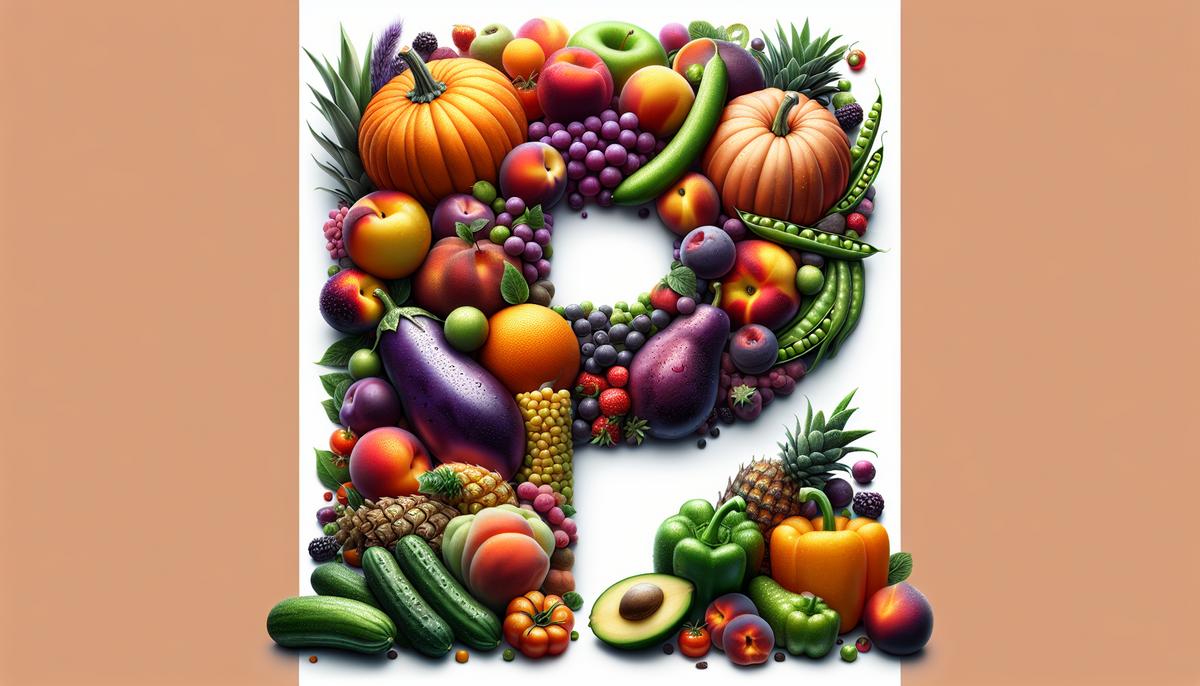Fruits and vegetables are nature’s treasure troves, brimming with flavors, textures, and essential nutrients. Today, we’re spotlighting some unique fruits and vegetables that begin with the letter “I.” These delightful edibles not only tantalize your taste buds but also pack a punch in terms of health benefits. Whether you’re a seasoned cook or just starting your culinary journey, these ingredients can elevate your dishes and boost your well-being.
Fruits that start with I
Indian Fig (Prickly Pear)
The Indian Fig, also known as the Prickly Pear, is a fruit from the cactus family that boasts a vibrant, spiky exterior and a juicy, sweet interior. This exotic fruit is native to the Americas but is now grown in various arid and semi-arid regions worldwide. When you cut open an Indian Fig, you’ll discover a bright, fleshy pulp that’s dotted with tiny seeds, which are entirely edible.
Nutritionally, the Indian Fig is a powerhouse. It is rich in dietary fiber, making it excellent for digestive health. Moreover, it’s packed with antioxidants like vitamin C and flavonoids, which help combat oxidative stress and inflammation. The fruit also contains essential minerals such as magnesium and potassium, which are vital for maintaining heart health and electrolyte balance.
Culinarily, Indian Fig can be used in a variety of ways. You can enjoy it fresh, scooping out the pulp with a spoon, or blend it into smoothies for a unique twist. It also makes a fantastic base for jams and jellies. Some chefs even incorporate it into salads and salsas, adding a sweet and tangy note that complements savory dishes beautifully.
Indian Gooseberry (Amla)
Indian Gooseberry, commonly known as Amla, is a small, green fruit that has been revered in Ayurvedic medicine for centuries. Its tart flavor might surprise your palate initially, but it’s often balanced with other ingredients in culinary applications. Amla is typically harvested in the winter months and can be found fresh, dried, or as a juice.
Amla is exceptionally high in vitamin C, surpassing even oranges, which makes it a potent immune booster. This fruit also contains several polyphenols and tannins, which contribute to its antioxidant properties. Additionally, Amla is known for its benefits to hair and skin health, often used in natural beauty remedies.
In the kitchen, Amla can be transformed into a myriad of dishes. It’s a staple in Indian pickles and chutneys, where its sourness is balanced with spices and sweetness. You can also add Amla powder to smoothies or teas for a nutritional boost. For a more traditional approach, try incorporating it into Ayurvedic recipes like Amla Murabba, a sweet preserve.
Ilama (a tropical fruit related to cherimoya)
Ilama is a tropical fruit that belongs to the same family as the cherimoya and soursop. It has a unique appearance with its rough, scaly skin and soft, custard-like flesh inside. This fruit is native to Central America, particularly in countries like Mexico and Guatemala, and is cherished for its creamy texture and sweet, floral flavor.
Nutritionally, Ilama is rich in vitamins and minerals. It contains a good amount of vitamin C, which is crucial for immune function and skin health. The fruit is also a source of dietary fiber, which aids in digestion and helps maintain a healthy gut. Additionally, it provides essential minerals like potassium and magnesium, supporting overall cardiovascular health.
In culinary uses, Ilama is best enjoyed fresh. Simply scoop out the flesh with a spoon and savor its creamy, sweet taste. It can also be blended into smoothies or used as a topping for desserts like ice cream and yogurt. For a tropical twist, try incorporating Ilama into fruit salads or even cocktails.
Icaco (Coco Plum)
Icaco, commonly known as Coco Plum, is a small fruit that grows in tropical coastal areas. It has a smooth, glossy skin that can range in color from white to dark purple. The fruit is slightly sweet and has a subtle, almond-like flavor. Coco Plums are often found in the Caribbean and Central and South America.
Icaco is a good source of dietary fiber, which promotes healthy digestion and helps control blood sugar levels. The fruit also contains vitamin C, which supports the immune system and enhances skin health. Additionally, it provides small amounts of other vitamins and minerals like vitamin A and potassium.
In the kitchen, Icaco can be used in various ways. It’s often eaten fresh, but it also makes excellent jams and preserves due to its natural sweetness. You can add it to fruit salads for a tropical flair or use it as a topping for desserts. Some recipes even incorporate Coco Plum into savory dishes, such as sauces and glazes for meats.
Vegetables that start with I
Iceberg Lettuce
Iceberg Lettuce is one of the most common and recognizable types of lettuce, known for its crisp texture and mild flavor. Its pale green leaves form a tight, compact head, making it a staple in salads and sandwiches. Despite its somewhat bland reputation, Iceberg Lettuce can add a refreshing crunch to various dishes.
Nutritionally, Iceberg Lettuce may not be as dense in vitamins and minerals as darker leafy greens, but it still offers some benefits. It’s low in calories, making it a great option for weight management. The lettuce also provides small amounts of vitamins A and K, as well as folate. Plus, its high water content helps keep you hydrated.
Culinary uses for Iceberg Lettuce are vast. It’s most commonly used in salads, providing a crisp base that pairs well with various dressings and toppings. You can also use the leaves as a low-carb wrap for sandwiches and tacos. For a twist, try grilling wedges of Iceberg Lettuce and drizzling them with a tangy vinaigrette.
Indian Pea (Pigeon Pea)
The Indian Pea, also known as Pigeon Pea, is a legume that is widely used in tropical and subtropical regions. These small, oval peas come in various colors, including green, yellow, and brown. They are a staple in many cuisines, especially in Indian and African dishes, where they are valued for their versatility and nutritional benefits.
Indian Peas are nutritionally rich, providing a good source of protein, making them an excellent option for vegetarians and vegans. They are also high in dietary fiber, which aids digestion and helps maintain stable blood sugar levels. Additionally, Pigeon Peas contain essential vitamins and minerals like folate, iron, and potassium.
In the culinary world, Indian Peas are incredibly versatile. They are often used in stews, soups, and curries, where they absorb the flavors of the spices and other ingredients. In Indian cuisine, they are a key ingredient in dishes like Dal Tadka and Sambar. You can also use them in salads or as a filling for savory pastries.
Italian Sweet Pepper
Italian Sweet Peppers are a variety of bell pepper that are elongated and have a sweet, mild flavor. They come in vibrant colors, including red, yellow, and green, and are often used in Mediterranean and Italian cuisines. These peppers are celebrated for their versatility and ability to add a pop of color and flavor to dishes.
Nutritionally, Italian Sweet Peppers are packed with vitamins and antioxidants. They are an excellent source of vitamin C, which supports the immune system and skin health. The peppers also contain vitamin A, which is crucial for eye health, and several B vitamins that aid in energy metabolism. Additionally, they provide dietary fiber and folate.
In cooking, Italian Sweet Peppers can be used in numerous ways. They are delicious when roasted, grilled, or sautéed, and make a wonderful addition to salads, pastas, and pizzas. You can also stuff them with a variety of fillings, such as cheese, rice, or meat, and bake them for a flavorful and satisfying dish. Their sweet flavor also pairs well with dips and salsas.
Irish Potato
The Irish Potato, commonly known as the white potato, is a versatile and widely consumed vegetable. It has a starchy texture and a mild, earthy flavor, making it a staple in many cuisines around the world. Potatoes can be found in various shapes and sizes, but they all share the characteristic of being a culinary workhorse.
From a nutritional standpoint, Irish Potatoes are a good source of carbohydrates, which provide energy. They also contain important vitamins and minerals such as vitamin C, potassium, and vitamin B6. The fiber content in potatoes, especially when the skin is left on, aids in digestion and helps maintain a healthy gut.
Irish Potatoes can be prepared in countless ways, making them a versatile addition to any meal. They can be boiled, mashed, roasted, or fried, each method bringing out different aspects of their flavor and texture. Potatoes are the star ingredient in comfort foods like mashed potatoes and potato soup, but they also shine in more sophisticated dishes like gratins and gnocchi.




